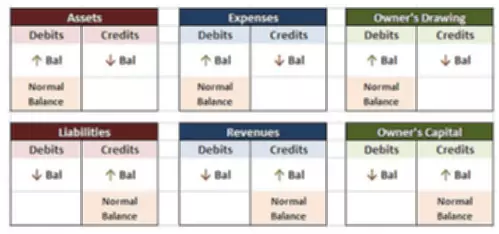Cap Rate: Defined And Explained
Content

First, you’ll need to learn how to calculate the net operating income (NOI). The NOI is essentially the sum of the property’s income streams minus the sum of the property’s expenses. Let’s take a look at what cap rates are, what they tell you and how to calculate them.

However, it is just one of many metrics that can be used to assess the return on commercial real estate property. Although cap rate gives a good idea of a property’s theoretical return on investment, it should be used in conjunction with other metrics such as the gross rent multiplier, among many others. Therefore, other metrics should be used in conjunction with the capitalization rate to gauge the attractiveness of a real estate opportunity.
Mitigating Cap Rate Risk
In real estate, investors generally contribute a portion of the money, then borrow the rest to acquire the investment asset. The return on equity measures the income relative to the investors equity in the asset, not as a portion of the value of the entire asset. Similarly, the cash on cash return measures income relative to the initial cash investors bring to a deal, not the entire asset value of the rental property. A capitalization (cap) rate is the ratio of a property’s Net Operating Income (NOI) in the first year of ownership, divided by its purchase price.

For the sake of simplicity, we will be using the same example from above, where the price of the home is $450,000 and the annual operating expenses come out to $6,500. By subtracting these two measurements, you can easily calculate a property’s net operating income. To begin, let’s get into the specifics of what cap rate is and why it’s useful. When it comes to finding out the value of a property, there are various approaches.
Calculating The Cap Rate
If you put $100,000 in a savings account, and it earns you $10,000 in interest at the end of the year, then you earned 10% interest. The income a rental property earns you is like the interest your money earns you in a savings account at the bank. In the example above, if you invest $100,000 in the income property, the property will generate $10,000 of income at the end of the year.
The cap rate helps measure the return of an investment property compared to other opportunities. As a general rule of thumb, a higher cap rate implies that an investment property offers a higher return than a similar investment. The obvious expenses to include are property taxes, insurance premiums, repairs and legal costs. However, there are less obvious expenses that should also be included such as potential vacancies. Most investors assume an average of 10% vacancy, but you can do some research in your local area to determine an accurate estimate of the property’s expected vacancy rate.
Is a Higher or Lower Capitalization Rate Better?
Generally speaking, the better the neighborhood, the lower the cap rate, because the headaches and hidden costs of property management are also lower. Just remember that cap rates are the beginning of your due diligence, not the end. Likewise, when you know what the cap rate is in a given market, you can also use this number to calculate the value of a property by dividing the correct cap rate by your NOI. At the current moment, Gainy is not a stock investing app, and you can’t directly buy stocks using it, but in the future, we definitely will provide this feature.
- To then calculate the cap rate, you divide the net operating income by the property’s current fair market value to get the cap rate, which would be 3.8%.
- In this case, an investor may look to acquire additional properties in this market.
- It is one mathematical calculation among many that will help you gain insight into a property you’re considering for purchase to expand your real estate portfolio.
- Perhaps you can secure favorable financing terms and using this leverage you could increase your return from 5% to 8%.
- Cap rate and gross rent multiplier are both metrics used in real estate investing, but they measure different things.
For example, let’s say you’re considering a property that brings in $5,000 per month in rental income without any additional income streams available. Cap rates are calculated by dividing the property’s net operating income (NOI) by its property asset value. Although NOI is the generally accepted figure used for calculating cap rates (financing and depreciation are ignored), this is often referred to under various terms, including simply income.
The market value of a rental property is calculated from the capitalization rate and the net income. The market value of investment property equals the NOI divided by the capitalization rate. As covered above, the cap rate is derived from the sales of comparable investment properties.
Cap rate and gross rent multiplier are both metrics used in real estate investing, but they measure different things. It stands for capitalization rate and is a metric used in real estate investing to measure the rate of return on a property investment. It is expressed as a percentage and takes into consideration the property’s net operating income (NOI) and its current market value. The cap rate is a valuation metric investors use to determine if a property is an attractive investment. However, it’s a percentage, so it’s even more similar to a stock’s free cash flow yield or dividend yield. The cap rate helps investors determine if a real estate investment is worthwhile compared to other potential investments based on the income it can produce relative to the investment value.
Formula for the Capitalization Rate
The internal rate of return (IRR) has the advantage of providing a return that considers the initial price of the property as well as multiple cash flows over multiple periods of time. The capitalization approach is focused on a single period or point in time for market value, and can’t be relied upon as what the actual cap rate defined return will be going forward. Since the IRR method uses multiple periods, some skill and judgment is establishing the assumptions that are used to project future revenues and expenses. The advantage of the capitalization approach is that it uses market values and income assumptions that are more readily available.
What cap rate is too high?
In real estate, a low (less than 5%) cap rate often reflects a lower risk profile, whereas a higher cap rate (greater than 7%) is often considered a riskier investment. Whether an investor deems a cap rate “good” is a direct reflection of whether or not they think the investment's return matches to the perceived risk.
However, as of January 2023, the average nationwide cap rates by property types were 4.9% for multifamily, 6.9% for office, 6.2% for industrial, and 6.7% for retail. That said, many analysts consider a “good” cap rate to be around 5% to 10%, while a 4% cap rate indicates lower risk but a longer timeline to recoup an investment. There are also other factors to consider, like the features of a local property market, and it is important not to rely on cap rate or any other single metric. Different cap rates among different properties, or different cap rates across different time horizons on the same property, represent different levels of risk.
It is one mathematical calculation among many that will help you gain insight into a property you’re considering for purchase to expand your real estate portfolio. The cap rate is the most popular measure through which real estate investments are assessed for their profitability https://www.bookstime.com/ and return potential. The cap rate simply represents the yield of a property over a one-year time horizon assuming the property is purchased on cash and not on loan. The capitalization rate indicates the property’s intrinsic, natural, and un-levered rate of return.
Gainy is a fundamental stock screener app that can help you to set & gain your financial goals and track your money deposits. It can be anything from “I want my money to work” to gain an amount of money for a new house. As stocks portfolio app will help you to make the investment process easy and amusing, not boring. So, to better understand whether a cap rate is useful for you, you should be well versed on the various things that affect the cap rate, which are discussed below. Don’t be put off by numbers – calculating it doesn’t have to be complicated. Different regions may experience diverse market conditions, creating varied Cap Rates.
For example, real estate located in packed cities tends to have higher cap rates compared to similar properties in smaller cities or towns. One way to think about the cap rate intuitively is by having it represent the percentage return an investor would potentially receive on an all cash purchase. This means that, if the cap rate comes out to around 5%, the investor would receive an annual return of around 5% on the investment property. It can vary depending on the type of investment property and the investor’s goals. Generally, a higher cap rate indicates a better return on investment, but this may also come with higher risk. A cap rate of 8% or higher is usually considered good, but it’s important to evaluate each investment property on a case-by-case basis.
- This return of 7% generated from the property investment fares better than the standard return of 3% available from the risk-free Treasury bonds.
- It can affect several things, ultimately impacting your investment’s profitability.
- The years following the 2008 recession witnessed cap rate expansion due to both credit risk, driving expected returns higher, and a dim outlook for NOI growth.
- In lower-end neighborhoods, you can often find high cap rates on paper, but be prepared to work harder for every cent of rent you collect.
